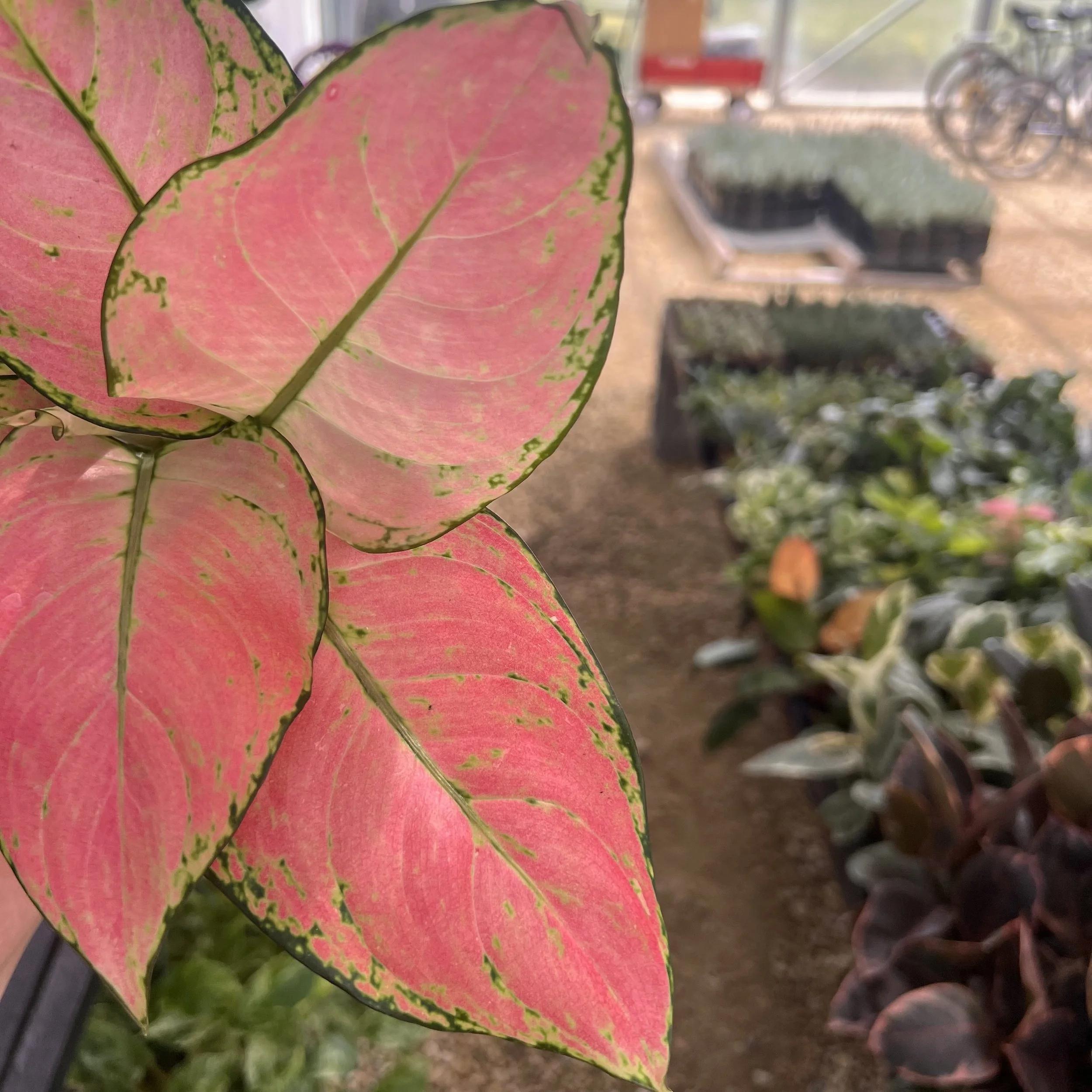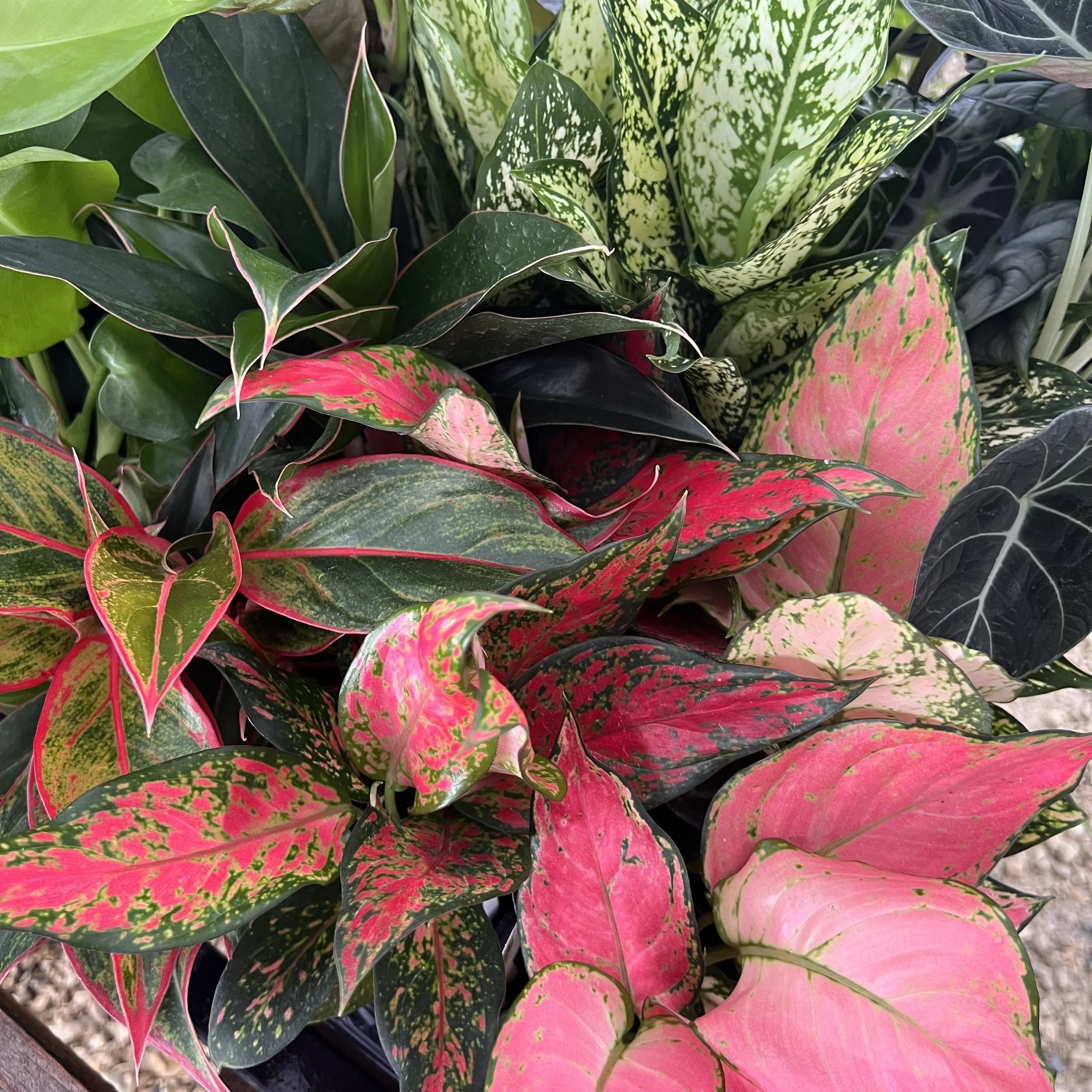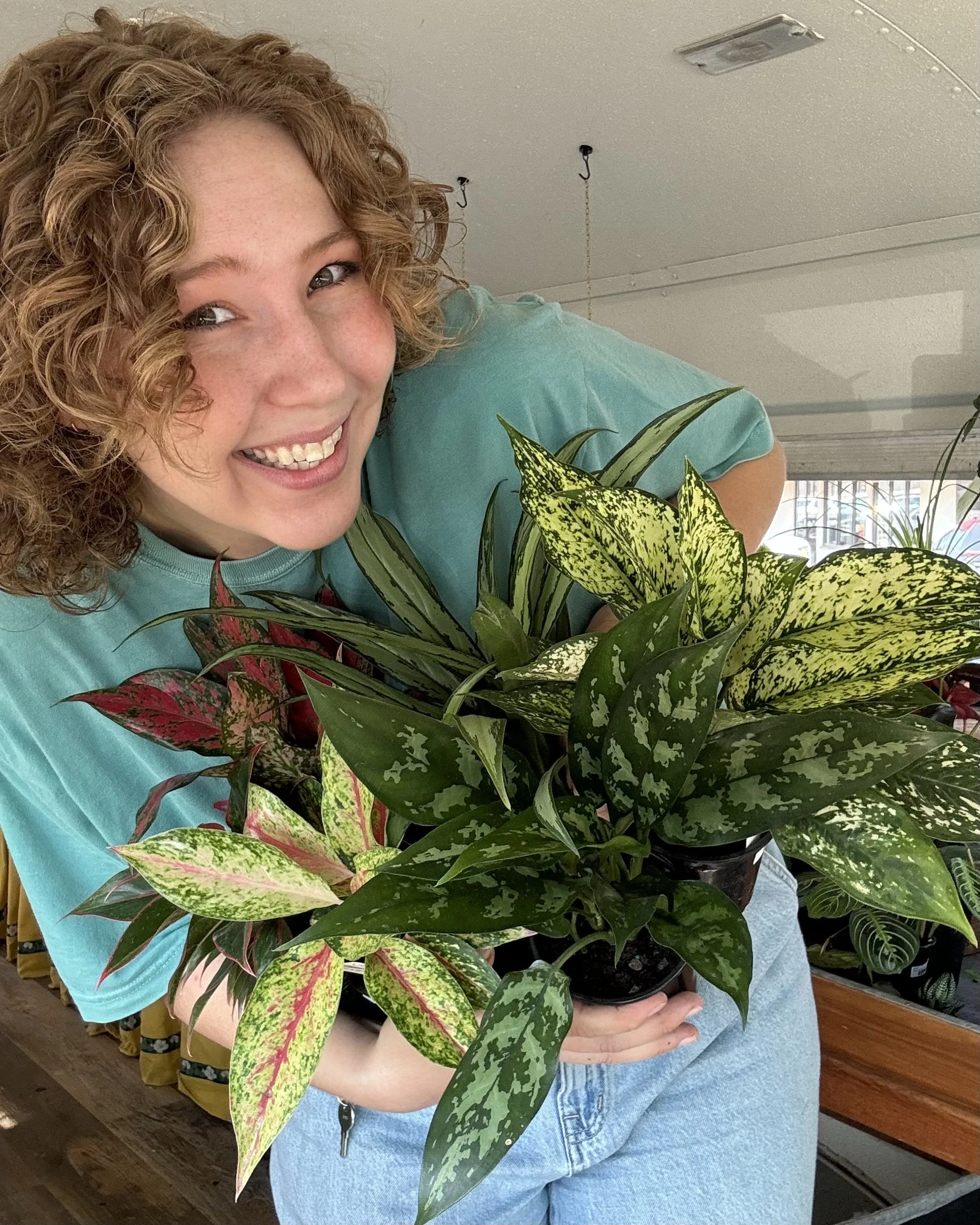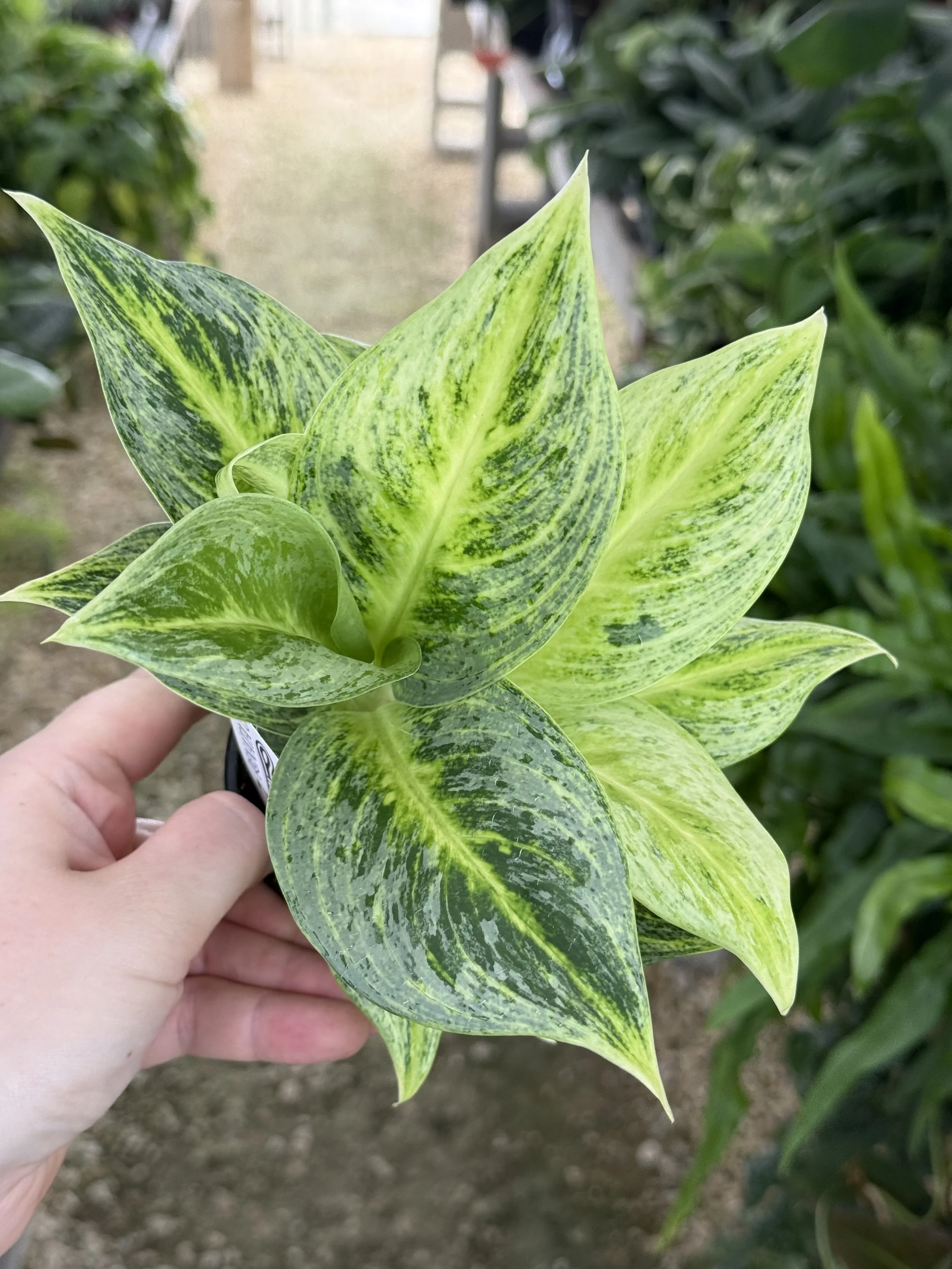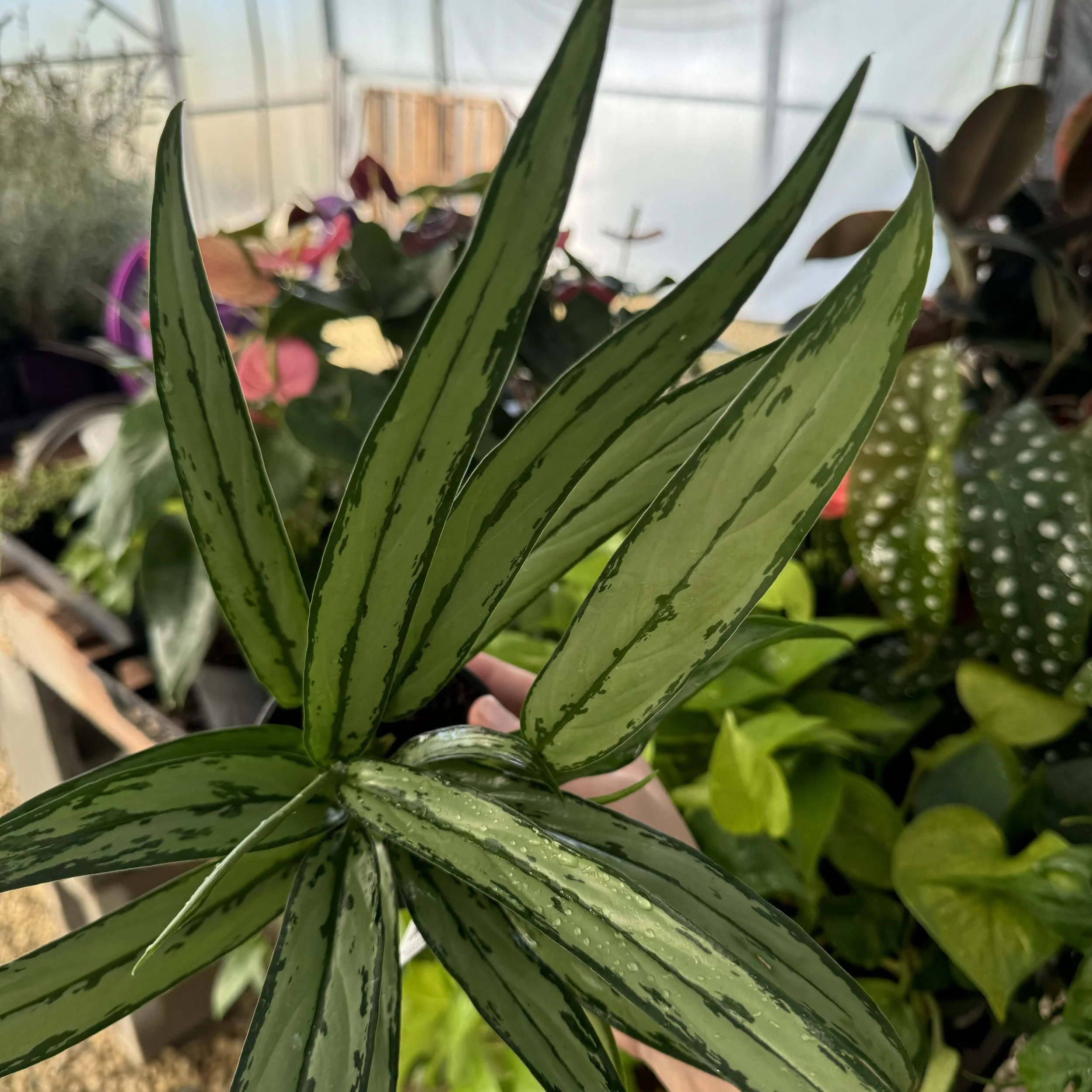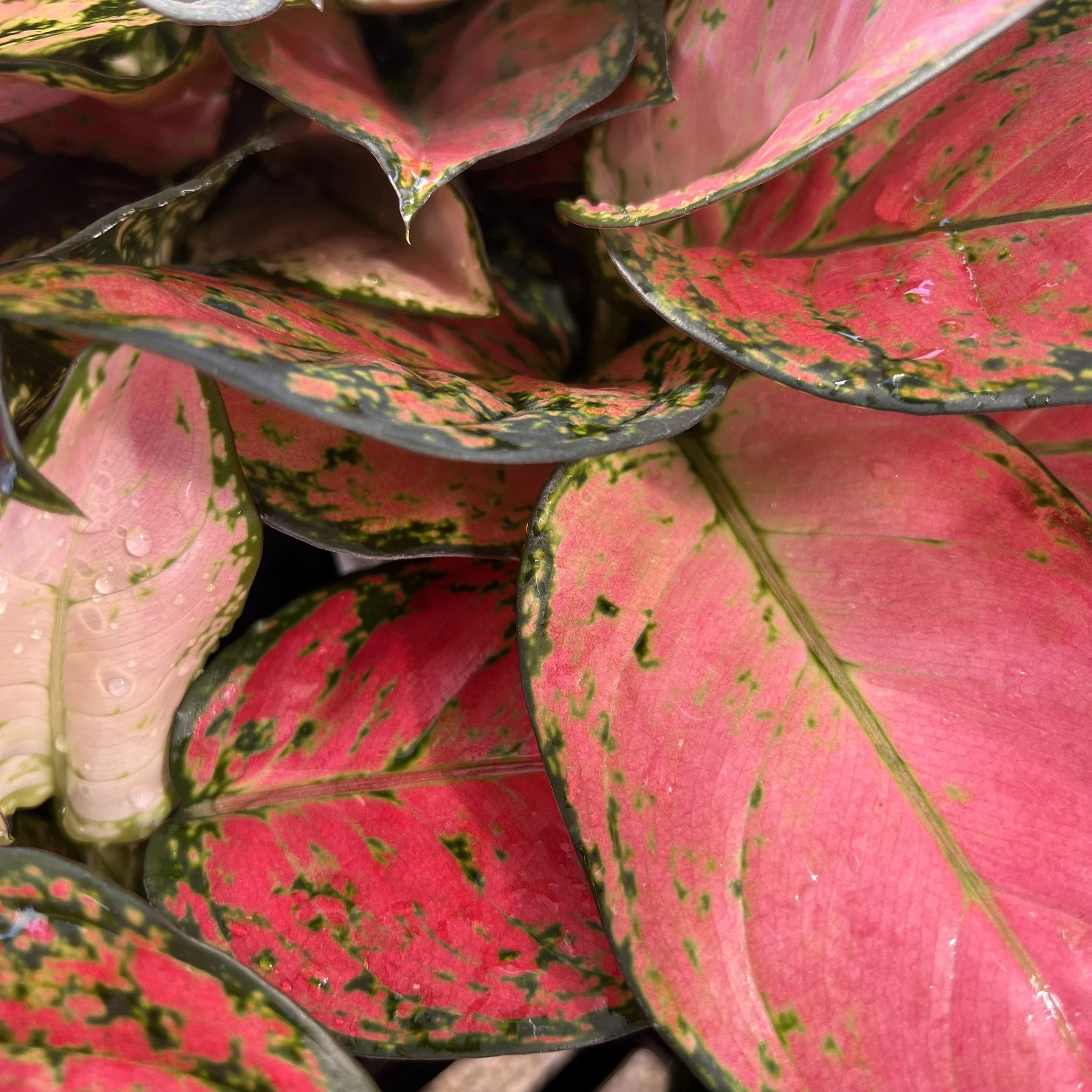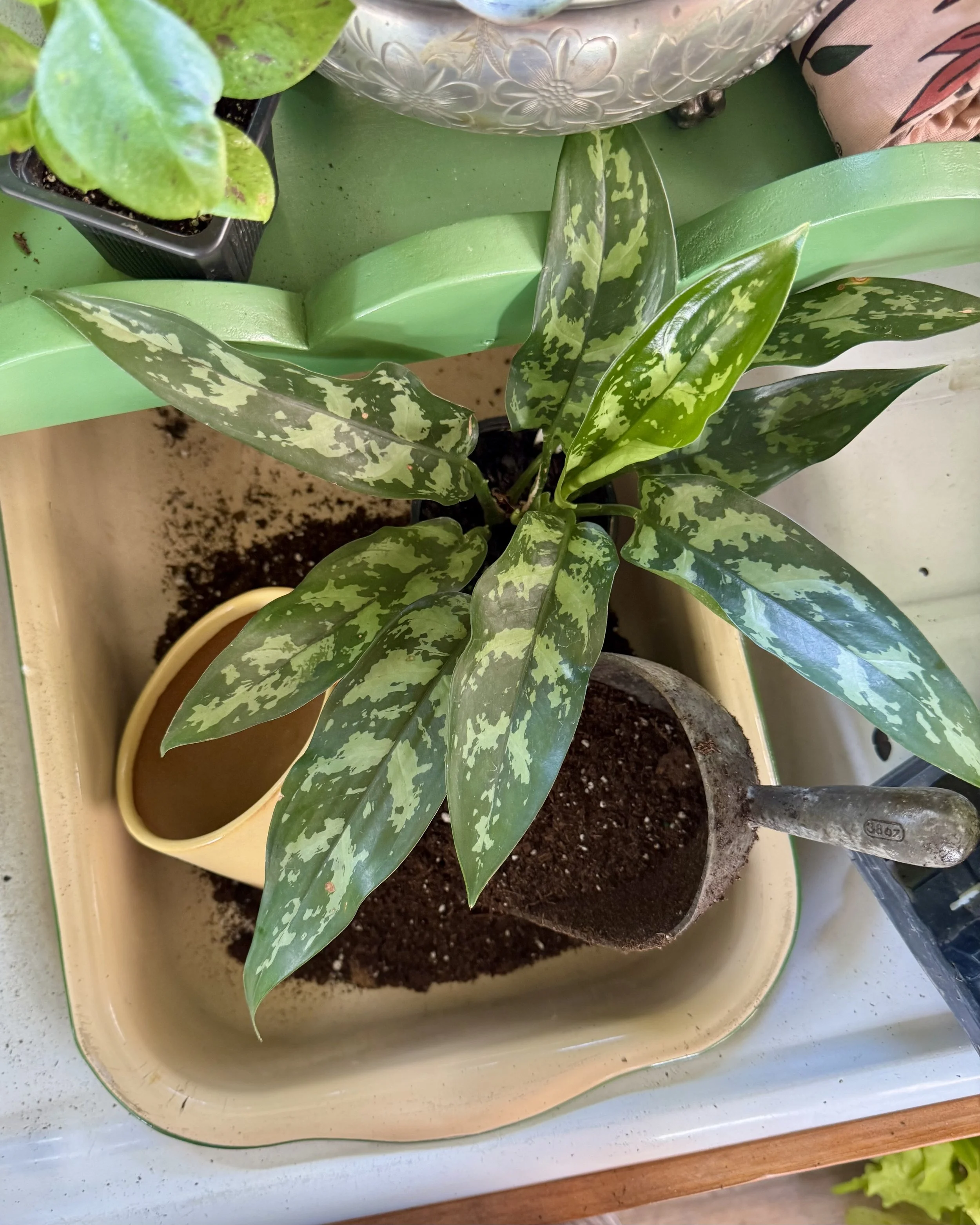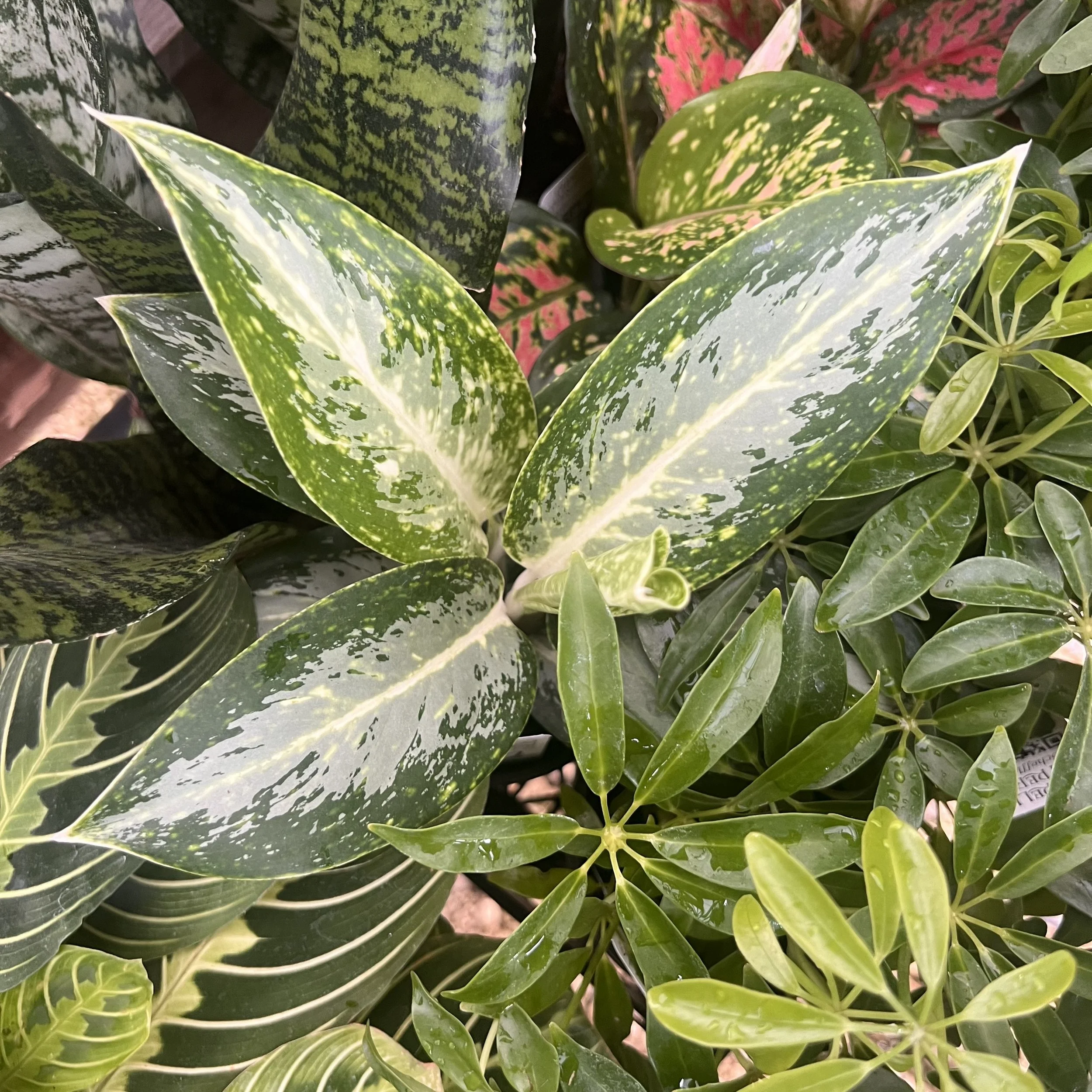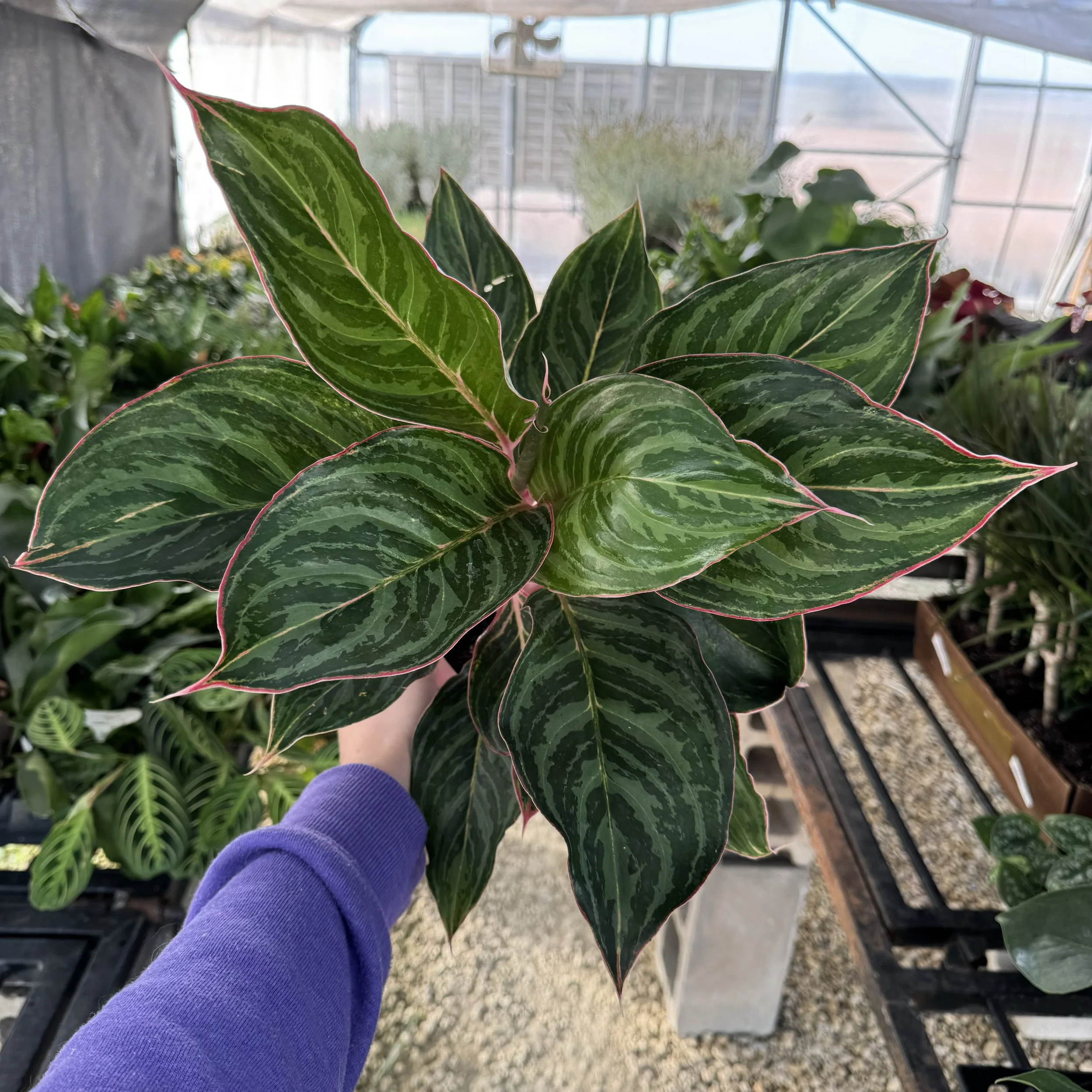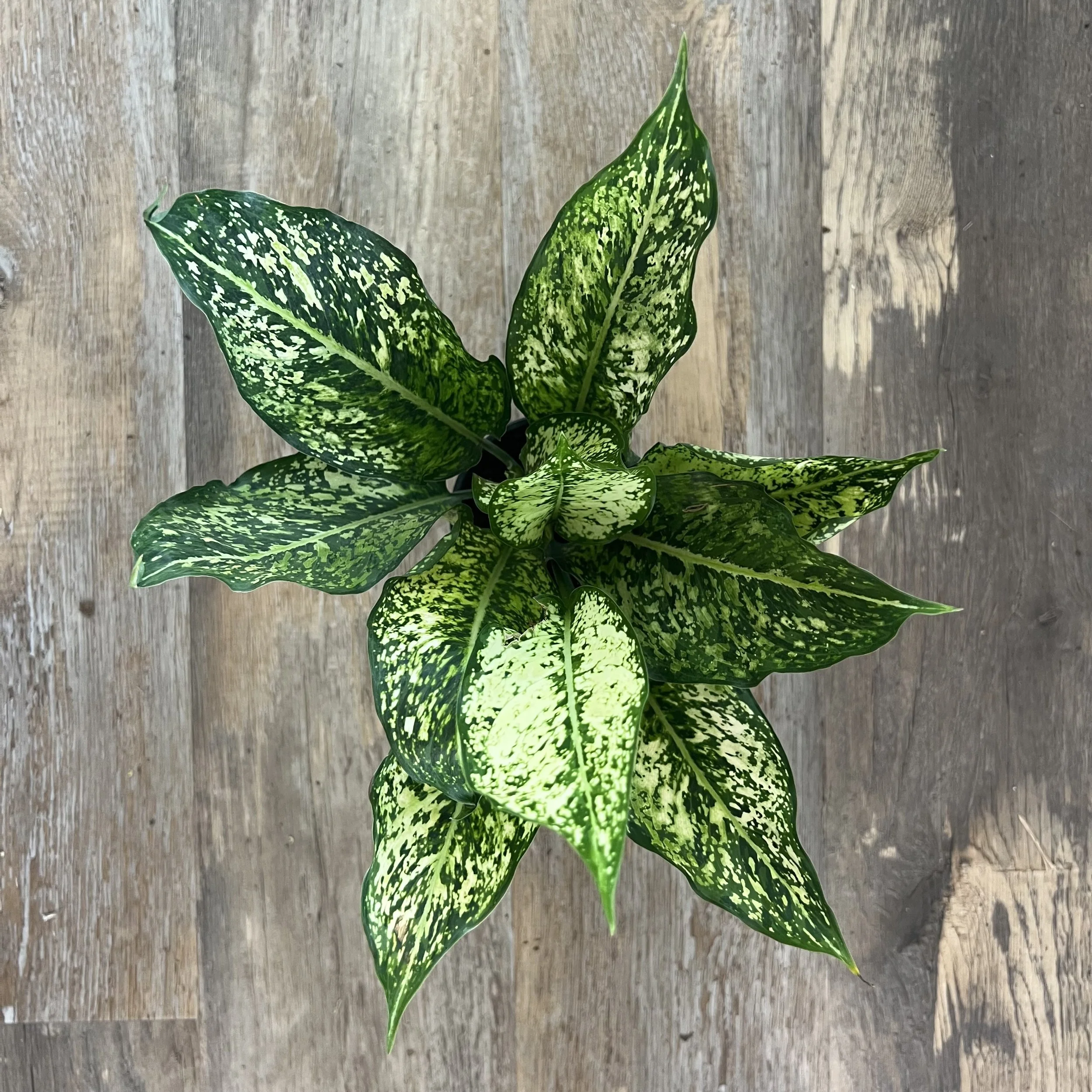CHINESE EVERGREEN
Aglaonema
Family Araceae
-
Light: Light requirements can vary for Chinese evergreen based on the color of its foliage. Pink to red varieties need brighter light, while green varieties can handle lower light.
As a rule of thumb, provide bright, indirect light. Try to find an east exposure room with plenty of filtered light.
No east room? No problem! You can achieve the same effect by placing the plant deeper into the room. Think window adjacent or opposite wall.
Temperature: 60-80 F
Humidity: medium to high; avoid drafty areas
-
Water: Water when the top 1-2” of potting mix feels dry to the touch. Overwatering is the most common problem with Chinese evergreen. Symptoms include yellowing leaves that wilt even though the potting mix is moist.
Repotting: Repot every 2-3 years to refresh potting mix and assess whether a slightly larger container is necessary. Only increase by 1-2” in pot diameter. Use a general purpose potting mix.
Fertilizing: Either…
Water Application: Incorporate fertilizer into your watering cycle once per month March through September. Dilute an all purpose fertilizer (20-20-20) by half OR use your favorite fertilizer rated for houseplant use in your water.
Slow Release: Incorporate slow release fertilizer pellets into the top inch of potting soil every 6 months. Apply the rate indicated for indoor plants on the label. If no recommendation for houseplants is present, apply 1/4 to 1/2 the listed rate.
Cleaning: Chinese evergreens can have large leaves that require periodic cleaning. I suggest 1-2 times per year, use a wash cloth with room temp water to remove dusts and spots. If grimy spots persist, try a dab of baby soap! Learn how to clean plant effectively on my YouTube episode!
-
The Araceae family includes many foliage favorites including: philodendron, monstera, anthurium & pothos.
-
(Listed in order of commonality…)
Root decay caused by overwatering
Fungus gnats
Two-spotted spider mites
Thrips
Mealybugs
-
Is Chinese evergreen pet safe?
It is slightly toxic to animals due to a higher concentration of calcium oxalate crystals (called raphides). Read more about it here.
COC can vary in abundance in different aroid plants and can cause varying reactions when consumed by humans or animals, ranging from a slight mouth irritation to swelling of the lips and throat. Use caution when housing aroids in a home with pets. KNOW YOUR ANIMAL’S TENDENCIES!
Related Videos & Articles
Aglaonema Variations
Have a more specific question?
I’m just a few clicks away.

